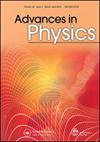矿物中的量子磁性
IF 13.8
1区 物理与天体物理
Q1 PHYSICS, CONDENSED MATTER
引用次数: 55
摘要
古希腊人发现磁性的原因是磁石的自然存在——磁石是磁铁矿的磁化版本。如今,天然矿物继续激发人们对具有量子临界行为或奇异基态(如自旋液体)的新型磁性材料的探索。最近人们对磁挫折和量子磁性的兴趣激增,很大程度上是因为天然矿物的晶体结构实现了烧绿石、戈姆或磁离子的三角形排列。因此,几十年前在矿物学界几乎不为人所知的天青石、黄钾铁矾、火山岩等名称进入了固态物理学的前沿研究。在某些情况下,天然矿物的结构过于复杂,无法在化学实验室中人工合成,尤其是以单晶形式,越来越多的例子证明了天然样品在量子磁学领域进行实验研究的潜力。在许多其他场合,矿物可以指导化学家合成具有特殊磁性的新型化合物。本综述试图涵盖这一迅速出现的跨学科领域,该领域将矿物学与低温凝聚态物理学和量子化学联系起来。本文章由计算机程序翻译,如有差异,请以英文原文为准。
Quantum magnetism in minerals
The discovery of magnetism by the ancient Greeks was enabled by the natural occurrence of lodestone – a magnetized version of the mineral magnetite. Nowadays, natural minerals continue to inspire the search for novel magnetic materials with quantum-critical behaviour or exotic ground states such as spin liquids. The recent surge of interest in magnetic frustration and quantum magnetism was largely encouraged by crystalline structures of natural minerals realizing pyrochlore, kagome, or triangular arrangements of magnetic ions. As a result, names like azurite, jarosite, volborthite, and others, which were barely known beyond the mineralogical community a few decades ago, found their way into cutting-edge research in solid-state physics. In some cases, the structures of natural minerals are too complex to be synthesized artificially in a chemistry lab, especially in single-crystalline form, and there is a growing number of examples demonstrating the potential of natural specimens for experimental investigations in the field of quantum magnetism. On many other occasions, minerals may guide chemists in the synthesis of novel compounds with unusual magnetic properties. The present review attempts to embrace this quickly emerging interdisciplinary field that bridges mineralogy with low-temperature condensed-matter physics and quantum chemistry.
求助全文
通过发布文献求助,成功后即可免费获取论文全文。
去求助
来源期刊

Advances in Physics
物理-物理:凝聚态物理
CiteScore
67.60
自引率
0.00%
发文量
1
期刊介绍:
Advances in Physics publishes authoritative critical reviews by experts on topics of interest and importance to condensed matter physicists. It is intended for motivated readers with a basic knowledge of the journal’s field and aims to draw out the salient points of a reviewed subject from the perspective of the author. The journal''s scope includes condensed matter physics and statistical mechanics: broadly defined to include the overlap with quantum information, cold atoms, soft matter physics and biophysics. Readership: Physicists, materials scientists and physical chemists in universities, industry and research institutes.
 求助内容:
求助内容: 应助结果提醒方式:
应助结果提醒方式:


